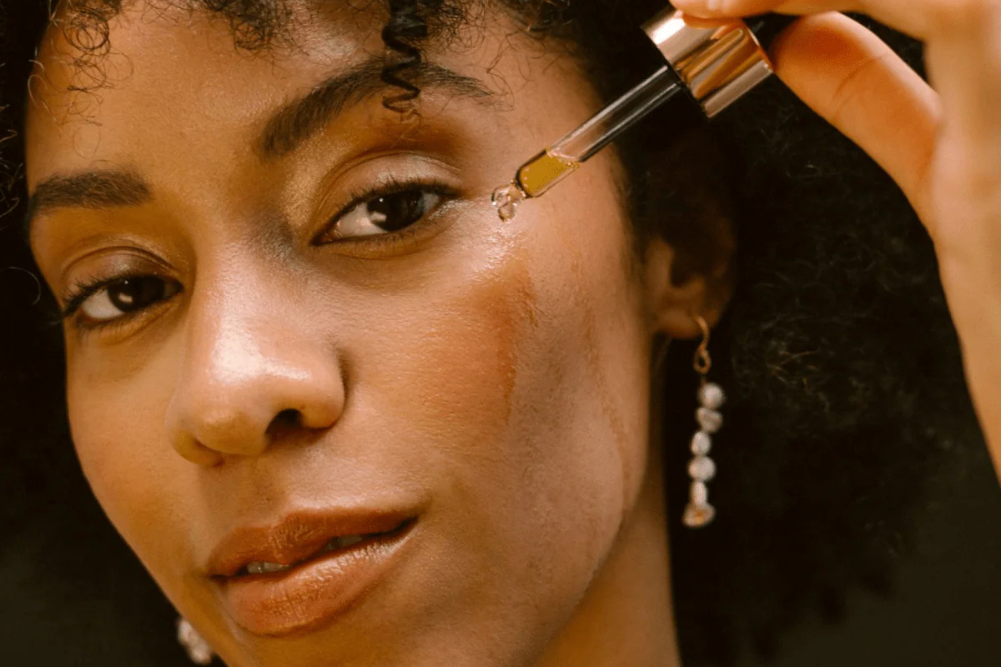Why glycation can leave your skin looking dull and wrinkled
You know that eating too much sugar is bad for your waistline, but did you also know it can contribute to the ageing of your skin? It’s all down to a natural process called glycation, whereby the sugar in your bloodstream latches on to proteins to form new molecules called advanced glycation end-products (AGEs) that can leave skin looking dull and wrinkled and can accelerate the ageing of your skin and body.
While sagging skin and fine lines are an inevitable part of getting older, there are often visible signs that your skin is suffering the effects of glycation rather than the normal ageing process. When skin is healthy, naturally forming collagen and elastin proteins provide texture, resilience, elasticity and shape. But when glycation and AGEs degrade connective tissue fibres in the dermis, these fibres become irreversibly cross-linked, stiff and rigid and skin noticeably loses its strength and spring, leading to wrinkles, furrows and sagging. Over time, accumulated AGEs can give the skin a yellow-grey tone while the dermis becomes thinner and weaker, making the skin prone to breakage, infection, inflammation and poor wound healing.
What’s more, if you can see this happening in your skin, the chances are it is also happening in the connective tissue throughout your body, which means it’s time to take action.
The more sugar you eat, the more AGEs form in your body, which can attack both collagen and elastin: the two key factors that keep skin smooth and supple. The primary way to reduce glycation is to reduce your sugar intake; however, as you might expect, not all sugars are created equal: glucose is the least active, while fructose (fruit, honey), galactose (dairy) and sucrose (pineapples, melons, apricots) are the most active.
When glycation and AGEs degrade connective tissue fibres in the dermis, these fibres become irreversibly cross-linked, stiff and rigid, and skin noticeably loses its strength and spring.
AGEs, like free radicals, can be made by the body or absorbed from food that has formed AGEs during the cooking process. Cooking at high temperatures, especially in the absence of water (barbecuing, baking, frying, roasting), can quickly form degenerative bonds (AGEs) between glucose and protein molecules in the food being cooked. This is intensified if a glaze (fruit, honey, sugar) is applied to the meat before cooking; however, an oil glaze actually protects protein against the formation of AGEs. The same applies to many items on supermarket shelves, such as processed products like biscuits, pasteurised milk and snack foods, which contain AGEs because high temperatures are used in their manufacturing.
According to research from the Mount Sinai School of Medicine in New York, eating high-glycation foods can also cause inflammation in the body. If we consume these types of foods for two weeks, blood and urine levels of AGEs can double. In contrast, a diet low in AGEs can reduce the prevalence of AGEs in blood and urine levels as well as lead to weight loss and a reduction in blood glucose levels.
What this means, effectively, is that by merely changing your method of cooking rather than the food itself you can slow down the ageing process.
How to reverse glycation
The good news is that there are two steps in the formation of AGEs and one is reversible. In the first stages of glycation, where excess sugar in the blood binds with protein molecules, the chemical changes of glycation can be reversed via a low-glycaemic diet, supplements and regular exercise.
Naturopath Alison Cassar says, “Two effective supplements are alpha lipoic acid (a powerful antioxidant that protects proteins against free-radical attack and facilitates the removal of glycated collagen and elastin proteins, preventing them from becoming AGEs) and the amino acid L-carnosine, an antioxidant that prevents the glycation of proteins and their degradation by free radicals into AGEs.”
Chromium is also a helpful supplement for keeping sugar cravings at bay, as is eating good fats and good, easily digested sources of protein such as slow-cooked soups and stews with animal protein, fermented protein, fish, soaked nuts etc. Both good fats and protein help curb sugar cravings.
In the second step, these protein-sugar complexes are attacked by free radicals and degraded into AGEs and, sadly, this is irreversible. Over time, AGEs will slowly accumulate due to years of poor sugar control (resulting in high free-radical load), which can accelerate the ageing of the skin and body. This happens when AGEs cross-link, tangle and fray protein fibres, which reduces the strength and elasticity of the skin, or when damaged proteins accumulate and trigger inflammation in the body, which leads to increased skin sensitivity, a higher chance of bedsores or skin breakdown, acne, rosacea, psoriasis and eczema.
So how do you keep your glycation in check? Opt for a low-sugar diet and, when you eat fruit or sucrose, combine it with a form of protein such as nuts to help ameliorate the spike in blood sugar levels. Also eat good, easily digested sources of protein (slow-cooked meat and vegies, soups and stews, activated nuts, soaked seeds etc) regularly to help keep blood sugar levels balanced, avoid charring your food and exercise regularly. Your skin will thank you for it.








